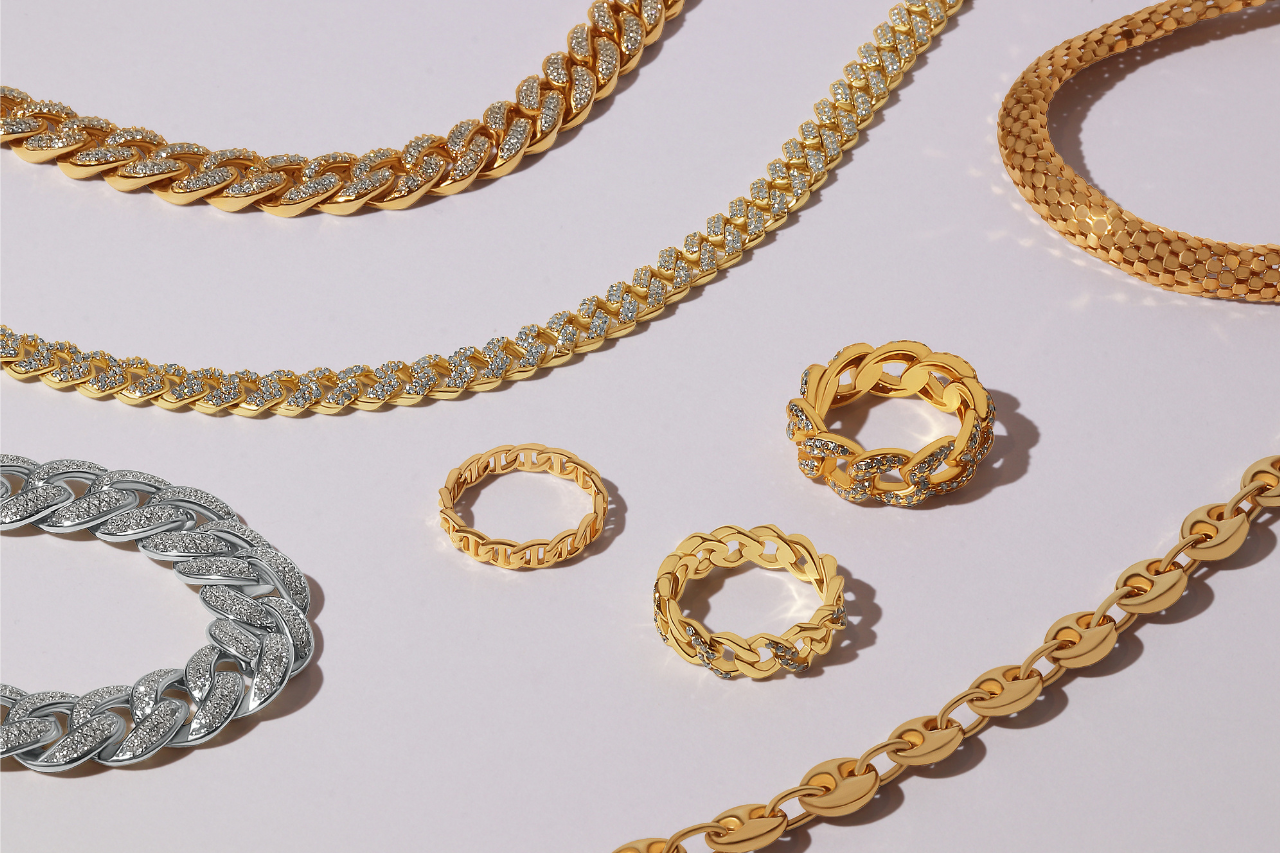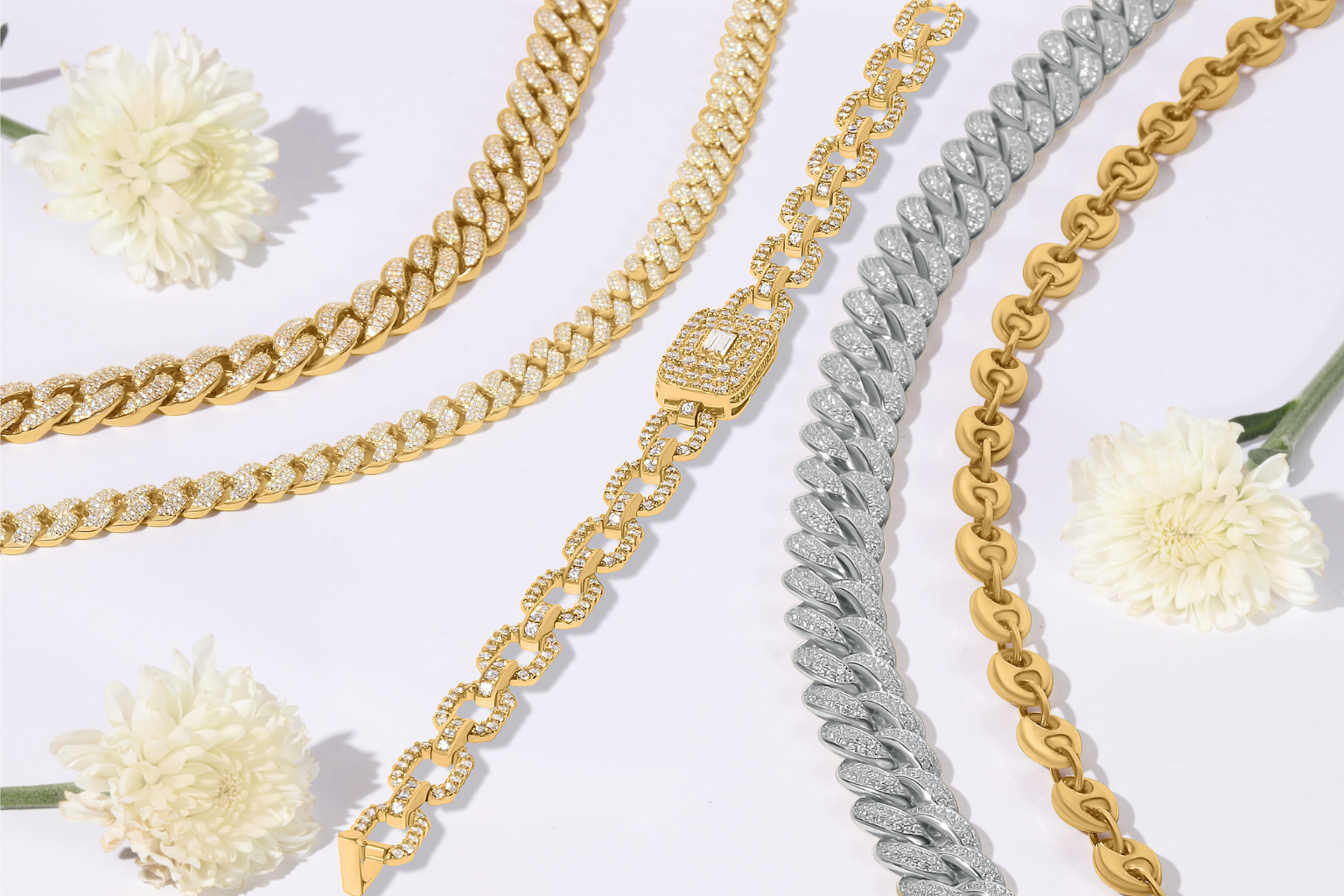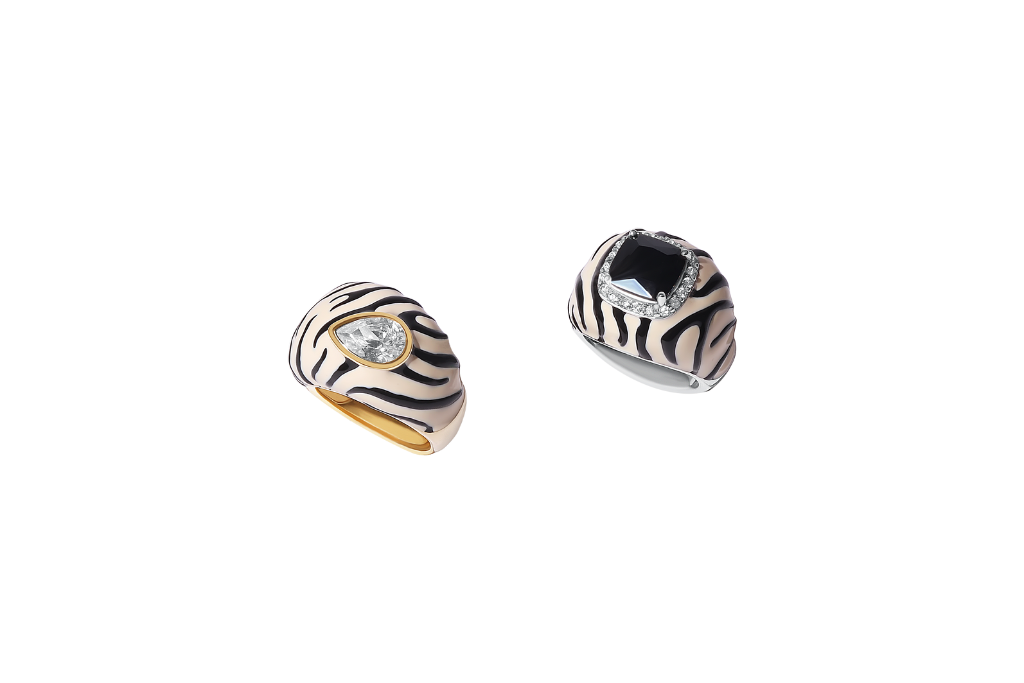What is Fine Jewelry?
What is fine jewelry? Here are 23 quick facts you must know before buying fine jewelry.

Things can get pretty complicated when researching jewelry. What is fine jewelry? To make it easy for you, we created a fine jewelry fact sheet. Save time and get the full understanding of jewelry by reading the following 23 key points you must know before buying fine jewelry.
1 There are two types of jewelry: fine jewelry and costume jewelry
2 Fine jewelry is jewelry made of precious metals. The most common ones are gold, silver, and platinum.
3 Costume jewelry are made of inexpensive metals, often made with copper, aluminum or brass.
4 Designers do not always produce fine jewelry. They may also produce costume jewelry. The difference is in the material. Simply ask the designer what material it is made out of.
5 Between gold, sterling silver, and platinum, platinum is most expensive followed by gold then sterling silver.
6 Combinations of fine jewelry materials have decreased the overall cost allowing fine jewelry to be more affordable.
7 Platinum fine jewelry tend to not be altered.
8 Platinum is an excellent alternative to white gold in the event one has nickel allergy.
9 Pure gold is naturally yellow in color. However, there are different colors of gold available in the market. The different colors of gold are based on the different metals added onto gold.
10 Pure gold is soft and malleable therefore it is common for gold to be mixed with other metals like copper, silver, or zinc.
11 White gold is usually mixed with zinc, nickel or platinum. White gold is usually rhodium coated to ensure durability and shine.
12 Rose gold is mixed with copper. It is important to compare different rose gold fine jewelry as the more red it is, the less gold the metal contains.
13 Gold is commonly used to cover metals thus creating gold plated, gold filled, and gold vermeil (pronounced ver-may) jewelry.
14 Be careful with gold plated as the metal being plated may not be a precious metal. The gold plating must be at least 10 karat gold. Eventually, the jewelry would experience wear thus needing to be plated again.
15 Gold filled jewelry is of higher quality but it tends to cover brass or copper. There is more gold on this jewelry thus eliminating the need to re-plate the jewelry.
16 Gold vermeil features the greatest thickness of gold and is always plating a precious metal like sterling silver. Vermeil gold is at least 14 karats. There also is no need to re-plate this jewelry over time.
17 Pure silver, like gold, is soft and malleable. It is normally mixed with copper.
18 The key focus on determining silver jewelry quality is in its percentage of silver. Silver has a hallmark (which is just a mark on the jewelry piece) that shows the percentage of silver of the piece.
19 Sterling silver is at least 92.5% silver. The hallmark on the jewelry piece would state a number. Sterling silver’s hallmark should show at least 925. All sterling silver jewelry has a hallmark. If it does not, be careful as the product may be fake or counterfeit.
20 Metal allergy can really impact how people enjoy jewelry. It is important to know which metals you are allergic to. Nickel is one of the most common allergen. Cobalt, copper, and chromium allergies are also quite common.
21 People are usually not allergic to fine jewelry precious metals such as platinum, gold, and silver. However, it is possible. When trying new jewelry, be aware of how your skin reacts. Everyone reacts differently. It may result in itchiness, swelling, rash or other reactions. We recommend consulting with a health professional.
22 Hypoallergenic jewelry is simply a jewelry piece that has a low chance of receiving an allergic reaction. People may still receive an allergic reaction despite wearing a hypoallergenic product.
23 Hypoallergenic also means the amount of nickel in the product (nickel is a common allergen) is at levels that are not identifiable. Whenever buying any jewelry, ask the retailer what materials are in the jewelry to ensure you can choose options that can minimize allergic reactions.
We hope this has helped you understand fine jewelry to the point of being confident when shopping for one. Shopping for fine jewelry should be a joyous occasion. Let’s all enjoy fine jewelry together.







